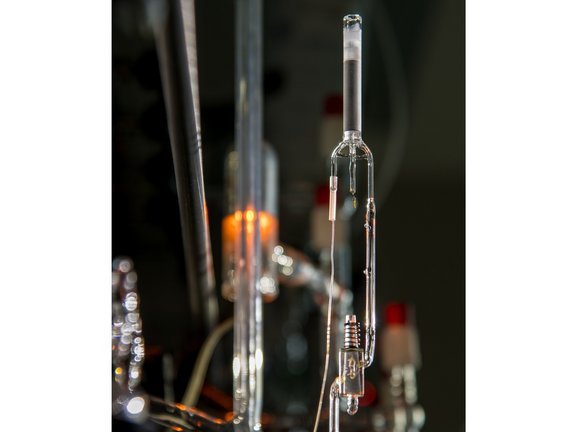In Germany, almost 2000 people die every year from lung cancer caused by radon. The colourless and odourless radioactive noble gas is primarily formed in the soil by the radioactive decay of uranium and thorium, which occur there in minute traces. From there it diffuses into houses where we inhale it and where it may damage our lung cells. Although the concentrations are very small, radon thus poses a considerable health risk, which must be reduced by appropriate measures.
Radon is even more dangerous for the XENON1T detector, currently the most sensitive instrument for the direct search for dark matter, in which the MPIK is significantly involved. Radon can diffuse into the detector, and its radioactive decays are indistinguishable from the faint traces that dark-matter particles would leave in the detector. Therefore, when building a house, and even more so when building a dark matter experiment, radon must be avoided as best as possible!
To build the world-beating dark-matter detector, however, perfect sealing is by no means enough, because the maximally allowed radon concentration in XENON1T is about 1 million times lower than that in typical ambient air. For such enormous purity requirements, the detector's construction materials become relevant, since they also release radon in minute quantities. This so-called radon emanation of the detector materials is even dominant. It can only be eliminated by a careful material screening and selection prior to use. This in turn requires extremely sensitive radon measurement methods.
The MPIK is leading in the development of such methods, which allow for a detection limit of a few radon atoms. For this purpose, electrostatic radon monitors as well as miniaturised high-purity proportional counters made of quartz are used. The latter ones are handcrafted in our glassblowing workshop and enable the most sensitive measurements. Particularly important is the unique automated emanation system (Auto-Ema) developed at MPIK, which allows the simultaneous processing of many samples in a fully automated manner. Only with Auto-Ema, the high throughput of samples with highest sensitivity, that is required for a detector like XENON1T, became possible.
Recently, the XENON collaboration published the details of the radon emanation measurements. In addition to the results for all individual samples, it is also shown how the remaining radon sources are distributed in the detector and how it is possible to further reduce the radon concentration by selectively replacing contaminated components in combination with permanent xenon purification. In the end, a record value of only 4.5 micro-Becquerel per kilogram xenon was achieved. This is the lowest radon concentration ever achieved in a dark-matter experiment with xenon.
The methods for radon detection and radon mitigation are continuously being improved at MPIK, such that the follow-up experiment XENONnT, which has just started, will achieve an even higher radon purity. After all, larger experiments can only be more sensitive for dark-matter search if the radioactive background is further reduced. With our expertise at MPIK, we ensure that this will also be the case in the future.
Original publication:
222Rn emanation measurements for the XENON1T experiment, XENON Collaboration, Eur. Phys. J. C 81, 337 (2021), DOI: 10.1140/epjc/s10052-020-08777-z
Low-Level Techniques (Division Lindner at MPIK)
